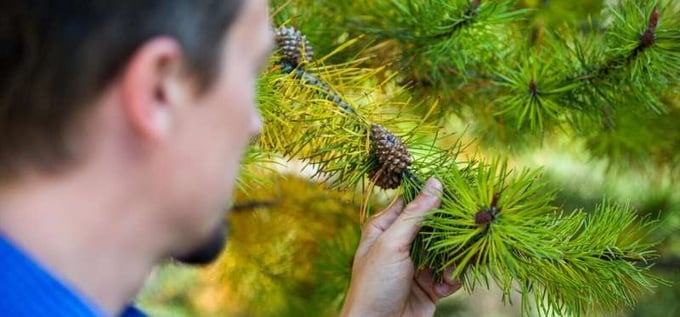November 27, 2025 | 02:39 GMT +7
November 27, 2025 | 02:39 GMT +7
Hotline: 0913.378.918
November 27, 2025 | 02:39 GMT +7
Hotline: 0913.378.918

The recent UCalgary study suggests there are some key genes that are particularly important for how plants respond adaptively to environmental change. Credit: University of Calgary.
Dr. Sam Yeaman, Ph.D. and his team in the Department of Biological Sciences have published a new study, titled "Repeated Global Adaptation across Plant Species," in the journal Proceedings of the National Academy of Sciences(PNAS).
The research, led by Dr. Gabriele Nocchi, Ph.D., is a first look at whether distantly related plant species-from sunflowers to poplars- use the same genes to adapt to similar stress.
The answer?
"Yes, and no," Yeaman, an associate professor in the Faculty of Science, says in an interview. "They do overlap more than randomly, but they still do a lot of different things. You could say that while each species has its own story, they share many of the same characters."
The study suggests there are some key genes that are particularly important for how plants respond adaptively to changes in their environment.
It comes a few months after Yeaman's lab published another study titled "The Genetic Architecture of Repeated Local Adaptation to Climate in Distantly Related Plants" in Nature Ecology & Evolution.
That paper, published with an international team of authors in August, analyzed genomic data from 25 distantly related plant species, including many of the same species studied in this new paper. It found many genes were repeatedly involved in adaptation to similar climate factors.
While both studies examined how plants adapt to their environment, there were differences.
The Nature paper studied how plants adapt to spatial changes, from the frigid Yukon boreal to the temperate B.C. rainforests; and the PNAS paper explores how species adjust to a change in environment over time.
"Taken together, they give us a better understanding of what's happening," explains Yeaman.
He says much of the research is pure science right now, but there's a lot of excitement about it in the agriculture and biotech industries. That's because it helps in the understanding of how plants use similar genetic mechanisms to adapt to their environment.
Those genes could be important for developing crops that are more resilient to climate-related challenges, which would help to improve food security.
The research also tests important predictions of evolutionary theory, a concept Yeaman explained with a day-to-day example from our homes.
"You can flip your thermostat and turn your furnace on or off to make a big change in temperature, or you can make renovations to improve your home's overall thermal efficiency, doing lots of small tweaks; from improving insulation to upgrading windows to fixing air leaks."
Evolution, he says, favors a similar difference in strategy.
"When the whole species is adapting to a new stress like climate change (over time), theory predicts it will tend to involve many small mutations," explains Yeaman. "But when different populations inhabit hot versus cold environments (over space), the best strategy is to have a small number of big mutations that act like thermostats controlling the difference between populations in hot versus cold conditions."
Consistent with those theories, his team found in the Nature Ecology & Evolution paper that genes driving adaptation over space tend to have larger effects, while in the PNAS paper they found that genes driving adaptations over time tend to have smaller effects.
"In both cases, we would find the same genes popping up over and over again in species as different as sunflower and poplar," he says.
(Phys.org)
/2025/11/26/4909-2-154329_878.jpg)
(VAN) Pearl grouper farming in HDPE cages not only delivers economic efficiency but also contributes to protecting the environment, creating jobs, and promoting marine-based experiential tourism.

(VAN) The model of making a living under the forest canopy through the agroforestry system in Van Son commune, Bac Ninh province, is expected to generate an annual income of approximately VND 30 million/ha.

(VAN) Many enterprises in Can Tho are harnessing natural energy and reducing greenhouse gas emissions in their production processes, thereby contributing to the promotion of a sustainable green transition.
/2025/11/24/3536-2-112800_176.jpg)
(VAN) Dong Nai now has tens of thousands of hectares of forests certified for sustainable management, and this area will continue to be expanded in the coming period.

(VAN) Vinh Ha hamlet (Dai Xuyen commune, Hanoi) is shifting away from small-scale farming as households adopt bioscurity into their breeder chicken models.

(VAN) Heavy rains make aquatic species more vulnerable to disease. Proactive water management and high-tech systems help farmers prevent outbreaks and protect yields.

(VAN) Greenhouses are shifting production mindsets in Binh Lu commune, enabling farmers to ‘weather the sun and rain’ and secure stable vegetable harvests throughout the year.